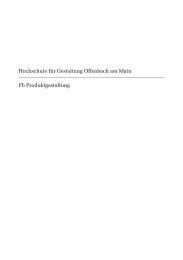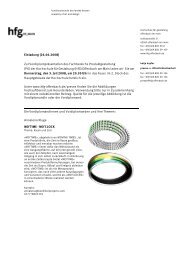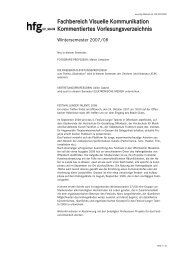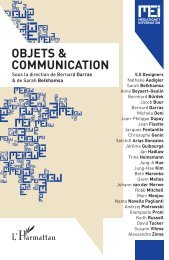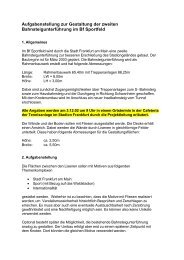User Manual
User Manual
User Manual
Create successful ePaper yourself
Turn your PDF publications into a flip-book with our unique Google optimized e-Paper software.
True exposure<br />
Shutter position<br />
Open<br />
Closed<br />
T 3 = T 1<br />
T 1<br />
T 2<br />
When using flash/strobe as the main light source<br />
and using the 1/800s shutter speed, you should<br />
turn off the True Exposure facility (Custom Option<br />
#13). Failure to do so will cause underexposure.<br />
You can download a full explanation of this<br />
situation from www. hasselblad.com.<br />
120<br />
Exposure at max aperture (e.g. f/2,8)<br />
Exposure at aperture f/4<br />
Exposure at aperture f/4 adjusted with true exposure<br />
True exposure<br />
Time<br />
The effective shutter speed for a central lens shutter is defined as<br />
the length of time between the opening and closing when measured<br />
at the half height position when expressed in diagram form (see<br />
diagram). The fact that it will take some time to open and close<br />
the shutter will have an influence on the effective shutter speed as<br />
the lens aperture closes to its setting. The faster the shutter opens<br />
and closes, the less this influence will be. It is also follows that the<br />
influence will be greater on shorter shutter speeds.<br />
With the lens at full aperture (largest opening), the amount of<br />
light at the film plane appears as illustrated by the blue curve in<br />
the diagram. The effective shutter speed then becomes T1. If the<br />
lens is now closed down by one stop, the amount of light appears<br />
as illustrated by the red dashed curve. The effective shutter speed<br />
is now increased to T2, which is longer that T1. The result is that<br />
the exposure is not reduced by exactly one stop (1EV), however,<br />
but slightly less. At the shorter shutter speeds, the exposure error<br />
can be as much as 0,5 – 0,8 EV.<br />
The True exposure mode can compensate for this exposure error<br />
since the behaviour of the shutter is a known and predictable factor.<br />
At shutter speeds of 1/150 second or shorter (faster), the camera<br />
will shorten the shutter speed to compensate, as illustrated by<br />
the green dashed curve. At the fastest shutter speeds, however, it<br />
is not possible to adjust the shutter speed and so the aperture is<br />
adjusted instead.<br />
Although it is probably an infrequently used combination, please<br />
note nevertheless that the fastest shutter speed / minimum aperture<br />
combination cannot be adjusted by True exposure.



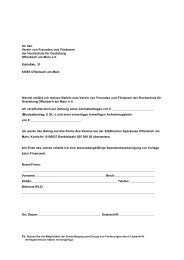
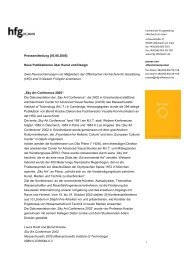
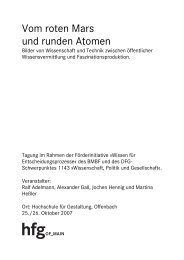
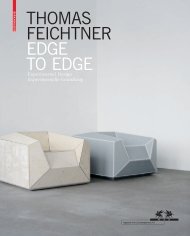
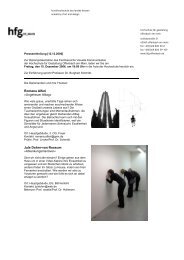

![Einladung [07.02.2006] - Hochschule für Gestaltung Offenbach am ...](https://img.yumpu.com/13375413/1/184x260/einladung-07022006-hochschule-fur-gestaltung-offenbach-am-.jpg?quality=85)
